I posted a video of a dream simulation done by Steal Adcock on Tiktok (see below) and I got some weird comments which has prompted me to write a blog about how the brain generates dreams and what can be said about dreaming and dream content quite definitively. Some of the comments made me think that a lot of people do not dream or do not remember very much at all about their dreams.
The reason I posted this video was to alert people to the fact that scientists are now trying to record dreams. Japanese researchers first map an association of brain activity with images using AI (artificial intelligence) models, and then record the dream activity of the brain and use these correlations to come up with some information about what the subject was dreaming about. At the moment, they are using MRI (nuclear magnetic resonance imaging) to map brain activity but we hope a sophisticated EEG (electroencephalogram) will do in the future. Click on the image below for more details. I pretended that Steal’s video was one of my recorded dreams to grab attention. To me Steal’s video captures what I dream about, although it may be a bit scary/nightmarish.
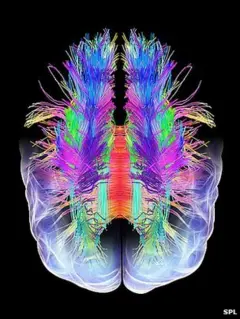
I would like to make a comment about one comment that kept coming from people, which was that dreams are just AI generated. They are not, and I hope I will explain why below by detailing what the brain actually does when we dream. For a start AI models, based on large language models, do not actually think, they just fake it. They just predict what the next word is and combine them in a way that looks like they are thinking. The human brain is a real thinking machine, with far greater complexity than AI model. There is no way an AI model could generate a film like Steal’s let alone a really crazy dream. They lack true creativity. Recently some researchers at Oxford University trained an AI on all science that was known up until the year 1633, and asked it what it thought about Galileo’s claim that the Earth orbits the Sun. It said Galileo was wrong.
Dreaming occurs during a phase of sleep called rapid-eye-movement sleep, or REM sleep for short. It is defined by the rapid movement of ones eyes back and forth laterally. We generally have about 3 to 5 of these periods of sleep each night. An infant has about 6 to 8 hours of REM sleep, and an adult has about 2 hours of REM sleep. The older you get the less REM sleep you have. Loss of REM sleep in the aged may be connected to short term memory loss as in Alzheimer’s disease.
If you are deprived of REM sleep, you experience REM rebound the next night. This in itself suggest that REM sleep serves an important biological function. I will not go into what that function is here, not right now anyhow. Maybe I will write another blog about the possible theories of REM sleep. You can access my other work which suggests that we dream to generate what we will be able to learn the next day, as well as consolidating recent memory and reducing obsession. I refer the interested reader to my book “Memory and Dreams: The Creative Human Mind” for details, published by Rutgers University Press 2002, and UNSW Press 2003, or you can watch a brief youtube video which summaries my theory of why we dream.
All mammals have REM sleep, including the echidna, which was initially thought to be the only mammal not to have REM sleep. Other animals may experience a form of sleep that is similar to REM sleep. Once again, this tells us that REM sleep serves an important biological function.
During REM sleep, the brain is more active than when one is awake. There is more electrical activity and there is an increase of blood flow into the brain. Once again this suggest REM sleep has an important biological function.
Dreams are generated by random input in the brain stem which replaces almost all visual and other sensory information that we would receive when we are awake. These cells which stimulate the neocortex, and some other brain organs, are called REM-on cells. I will come back to this shortly.
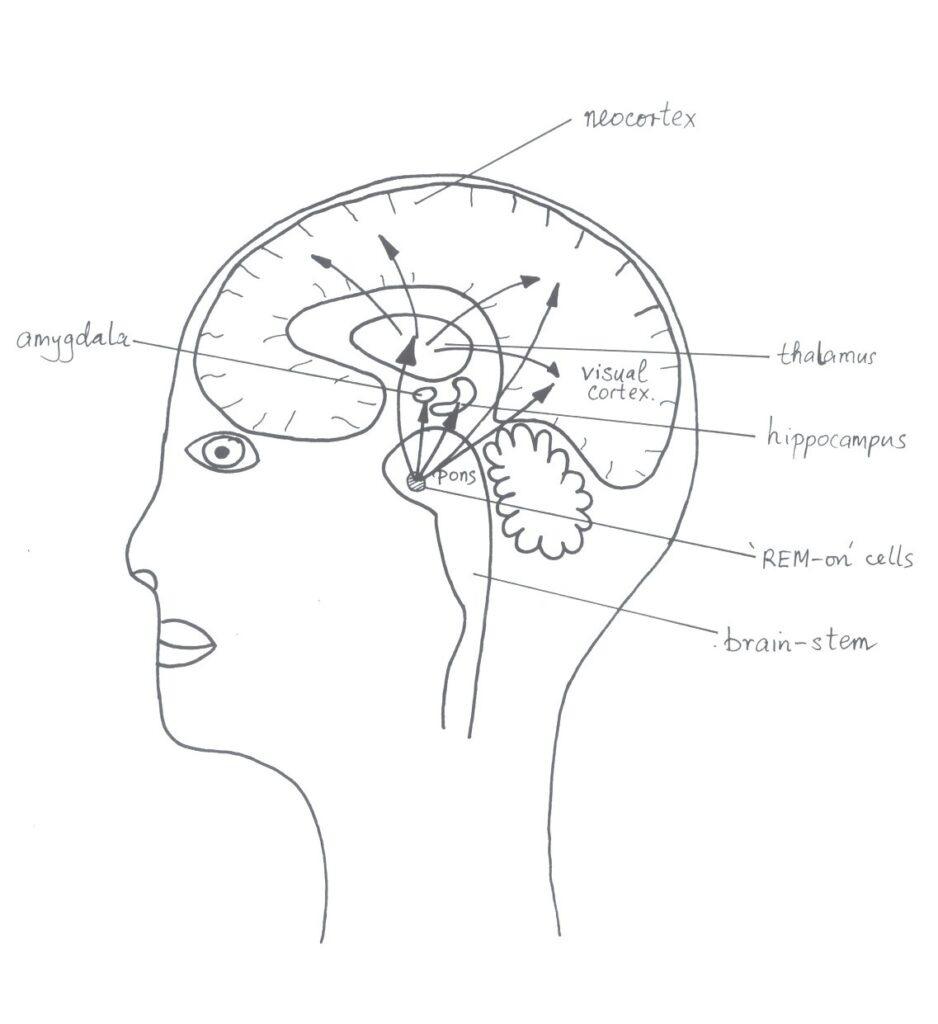
caption: During REM sleep, the Amygdala, Hippocampus, Thalamus and Neocortex are stimulated by semi-random input from REM-on cells located in the brain-stem. These regions of the brain process this information as if it is visual, auditory and somatosensory input as when you are awake.
During REM sleep, the brain processes this random input, using your neurons and synapses (in other words your memories encoded in your neural networks) and arrives at attractors. These attractors are processed almost completely internally. The output from the brain is not sent to your body (like when you are awake) because another group of cells, located in the brain-stem, called REM-off cells, stop that output from being enacted. A few signals are enacted. I will come back to this too. We know this because, we have removed these REM-off cells in a cat, and while it was dreaming, the cat acted out its dreams, jumping all over the place. The actions of our dreams may well be impeded so we do not hurt ourselves (or our partners) while we dream.
The few things that remain active during REM sleep are your eye movements, of course, some finger movements, and your sexual organs. The latter, led Sigmund Freud to suggest dreams where highly integrated with sexual fantasy but we now know that this is not entirely true. Freud attached too much significance to the sexual nature of dreams. The fact that many of our dreams are related to sex may have something to do with the fact that as these areas remain intact during dreaming they might initiate sexual dreams. The situation is very similar to my theory about Sudden Infant Death Syndrome. The dreams influence the body and the body’s environment influences dreams.
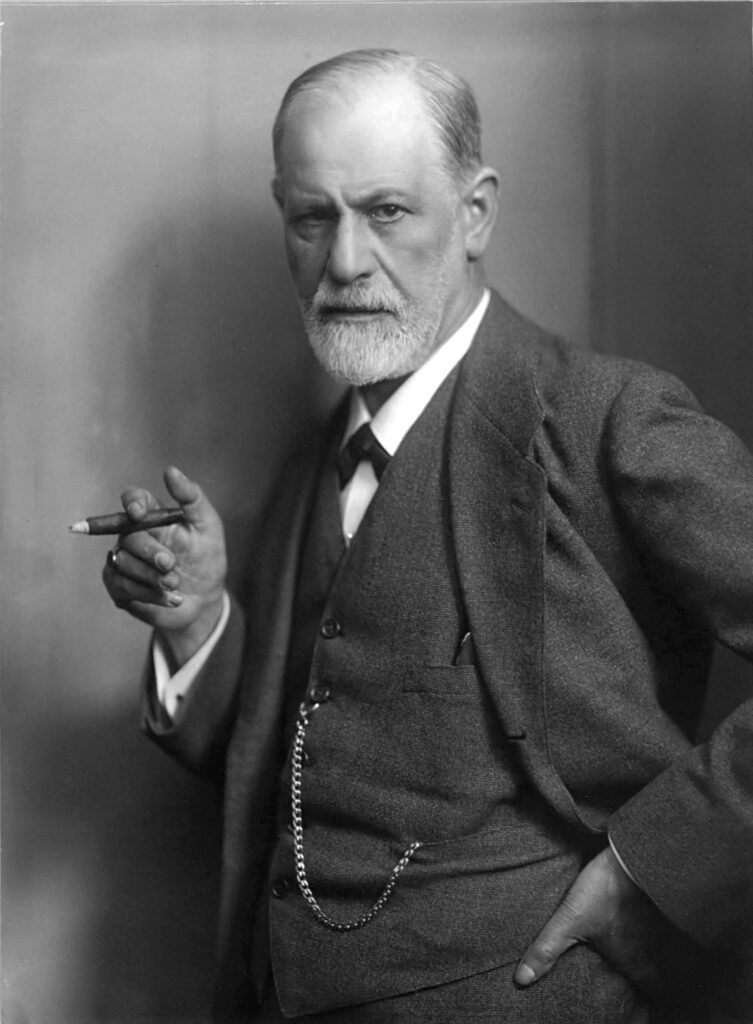
caption: Dr Sigmund Freud, the father of psychoanalysis
As the brain is processing the input from the REM-on cells during dreaming as if it was input from your usual sense, these dreams should appear quite natural or normal but as the input is semi-random, they may appear to be quite bizarre. In any case they are processed by your brain (or its neural networks) so they will be related somewhat to you own memories. You dream about your memories and I dream about mine.
Memories in the brain are stored in common areas sharing neurons and synapses. A natural mathematical consequence of this is that you brain also contains memories which are combination of these stored memories, so you may excite these so-called spurious memories. You may dream of a monkey eating an orange driving a bus for example. They are crazy mixed up states. Initially, these memories were called spurious states because there were so many of them in fully connected Hopfield neural network, but I suggested later that they may be creative states because in a more realistic sparsely connected neural network there were not so many. I may come back to this later, if I talk about the biological function of dream sleep. I have a theorized that these spurious memories are the basis of creativity in the brain.
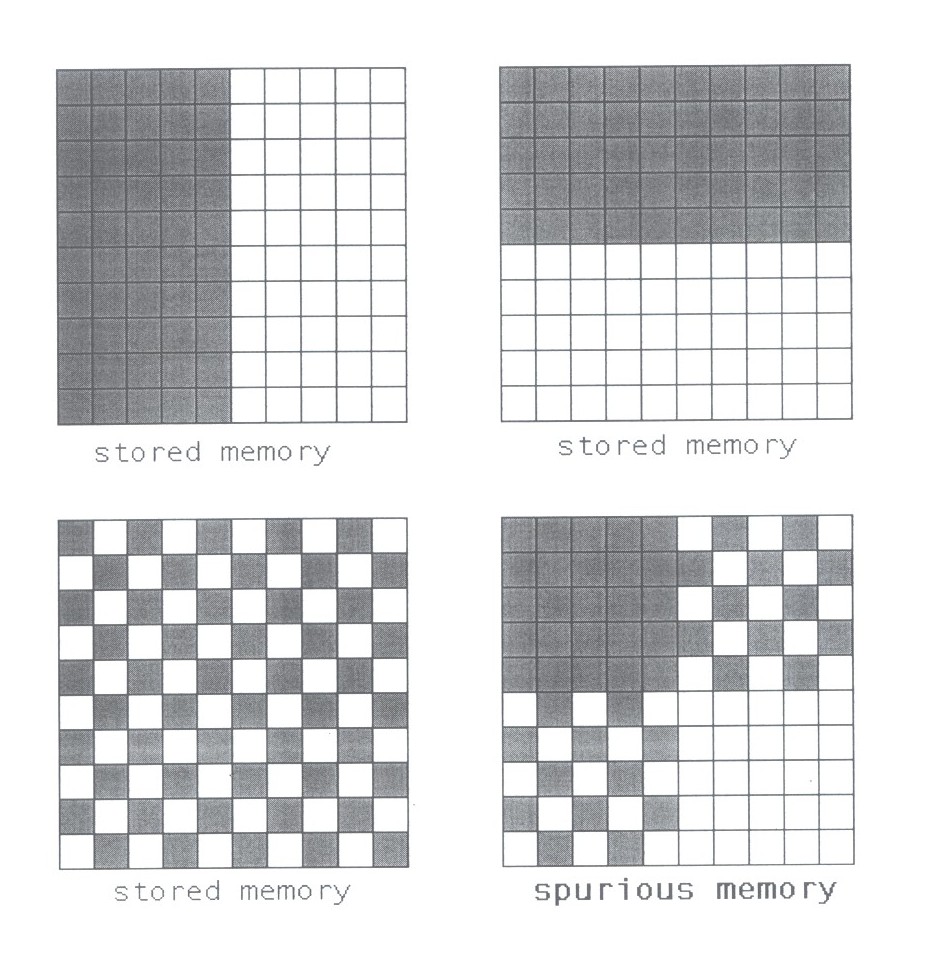
caption: an example of a spurious memory made by the overlapping storage of memories in the Hopfield neural network.
In any case, as you brain is processing this input, as if it were arriving from your eyes, ears, body, etc. it should appear quite natural. In other words, most dreams would be as a first person experience. Some people do experience dreams in third person, and some people (like myself) can swap from first person to third person, but in any case, from the brain dynamics, that I have explain above, most dreams should be in first person. Almost all of my own dreams are almost exclusively in first person experience. Lots of people on TikiTok (TT) were adamant that I was wrong, and that dreams were in third person only. I dispute this strongly, as I have often awoken while I am still dreaming and I am talking to whomever I am talking to in my dream as I wake up. I am actually speaking out aloud. A few of my dreams may be in third person but this is very rare. What I believe is happening here, is that a lot of the people who claim they are only dreaming in third person, is that either they are not very “conscious” during dreaming, so do not remember much, or they watch too many movies all night and dream as if they are watching a movie. As I am a lucid dreamer and I am often quite conscious and lucid in my dreams I recall very well what I am dreaming about and I assure you almost all my dreams are adventure to me in a first person experience. I am the camera, main star and sometimes the director as well. It is also true that some people do not even dream, or that is to say do not remember their dreams at all, and I suspect this may be the case with a lot of the Tiktok objectors. Apparently 6 to 22% of people do not recall any of their dreams. Another study suggest that this number is even smaller, like less than 1%.
Mr DNA, Francis Crick, proposed, with Graeme Mitchison, that dreaming is a reverse-learning process, and this is why we do not remember our dreams when we wake up, unless we go back into them backwards in our heads when we wake up, and soon, as they fade away very quickly from memory. They may also fade because the cholinergic neurotransmitter system is active during REM sleep and this is turned off when we wake up. Being very lucid or conscious in my dreams means that I can remember a lot more of my dreams. I have even been so lucid in some of my dreams that I am telling people in my dream that we are all in a dream. I can still get fooled in a dream if I am lucid though. Some unphysical aspect still escape me.
Some other comments I got from people on TT were that you cannot see yourself in a mirror, you cannot see your hands, or you cannot read. I dispute all of these as hearsay, because I have experienced all of these things in my dreams and there is no reason why they should no be in dreams at all. Once again, I put this down to the fact that these people are not very lucid in their dreams and do not recall much, or maybe they are just repeating hearsay. Another one you hear is you cannot die in a dream. If your dreams are in third person, why can you not die? I have actually been to my own funeral many times in my dreams. Obviously I am in flickering in and out from third person to first person in these dreams.
Another large group of people were adamant that we dream only in black and white. One person even told me only 2.5% are in colour. I asked for a reference. He said it is on Internet. Professionals say so, to which I said bullshit, I am a neuroscientist. It is true that some people dream in black and white, but not 97.5%. It is interesting that is it less now than it was in the past. Studies show that exposure to black-and-white media influences the colour in dreams. While 70–80% of people report dreaming in colour, a small percentage, such as the 12% reported in a 2008 study, reported to experience dreams entirely in grayscale only. This it because we use to watch more black and white television before, and newspapers were in black and white too. This is also why so many people dream in third person only too. They watch too much television at night before they go to bed, and many have a low level of consciousness during dream sleep to recall much about their dreams.
I also knew this because of experiments where people were asked to wear rose coloured glasses. Eventually, after 4 or 5 days all their dreams were rose coloured, and this colouring faded as the glasses were removed in another 4 or 5 days. This was how researchers were able to show that dreams are primarily related to recent memories. An interesting thing about this and the fact that dream sleep seems to involve a reverse learning algorithm is that when a relative dies we tend to dream about them a lot. This is the brain’s mechanism to deal with this traumatic memory and how it gradually forgets it. If dream sleep involves a reverse-learning mechanism it helps reduce obsession in general as well. I am not going to outline all the various theories of REM sleep here, but there is an interesting point in that we cannot rule out psychological aspects associated with dream sleep and even the idea that we dream for entertainment, although one could argue they cannot be the complete story as lots of people do not dream or recall that they dream.
I myself enjoy going to sleep at night because I know I am going to dream, and one dream that makes me fell good is when I dream about my parents who have been dead now for a few years. I enjoy the time I spend with them in my dreams.
I just had an interesting exchange with a tiktoker. She asked me why she dreams in third person. I said maybe you watch too much TV before she goes to bed. She said, nah, I stop watching one-hour before bed. I said try 2 days with no television. 5 days with no TV might be even better.
Quite a few people reported to me that their dreams as usually blurry or mirky or foggy or out of focus. I can only imagine they are not particularly conscious during their dreams, as this should not be the case at all given the dynamics of the brain during REM sleep. I do not dispute that they may remember their dreams as such.
I just awoke from a dream where I saw a man chasing another man in a lake. They were floating with something they were holding. It was something like a cross between a floatie and a canoe. The man chasing the other was never able to catch the other man, so I tried it, and saw it was impossible, but then the other man started chasing me. I was equally evasive, but in the end I got sick of the dream, so I woke myself up and I stayed awake for short while (10-20 seconds), but as I closed my eyes I slipped back into that same dream, which was wearing a bit thin and monotonous now, so I woke myself up for a few more minutes to remove this dream from my head completely. I then got up and wrote this paragraph, to tell you about it and to say how intensely first person in was for me, even while I was watching the other two men chasing each other. I was the observer and I was conscious of that fact. Even when I first viewed these people chasing each other, I, and I alone, was observing as I would in real life. I had a similar dream where I was playing chess and my opponent kept try to cheat in the final stages of a game. I tried to wake up longer enough about 6 or 7 times but kept slipping back into the same dream of a version of it. I had to get up physically to write this to hopefully erase that “dream” from coming back. My dreams are almost always usually like this and this fits in with my understand of how dreams are generated. What is also interesting (for something I will say later), is that I was so lucid I was able to focus my attention so much that I could play chess. My gamma waves much have been activated. My brain, and my brain alone, is generating these dreams, as if receiving input from the environment, but instead from the REM-on cells. Even though I was partly lucid, I was still tricked by my dream. This is also the case when I am completely lucid in a dream. I can still be fooled even if I know it is a dream.
One thing I can say about dreams is that there is no pain, at least not for me. Pain is a form of consciousness that seems to be largely absent in dreams. I have heard this before, and I know this personally as I had a condition called reflex sympathetic dystrophy (it is called complex region pain syndrome these days). I had the most intense pain imaginable in my left foot (sounds like a movie), which could not even be turn off completely with a lumbar sympathectomy. It is regarded my medical doctors as the most severe pain one can experience. I could not touch my left foot, at all. I had to sleep with my foot hanging off my bed for over a year. Anyhow, during my dreams I had absolutely no pain. It was as if I did not have this disease at all. The literature does however suggest that some pain can be experienced in dreams, and even the illusion of pain.
In general, some humans can experience some pain in dreams. Research indicates that dream pain can be very realistic and is often associated with intense emotions. This pain can be a direct result of a real-life physical sensation (when the body influences a dream), or it can be generated solely by the dream itself, drawing from memories of past pain. While it is not a common occurrence for healthy individuals, people who suffer from chronic pain are more likely to have dreams in which they experience pain. Once again this was not the case for me, when I was suffering from a chronic pain syndrome.
Lucid dreaming is a form of consciousness, so I do wonder if pain may become activated in dreams if one is exceedingly conscious.
I finally get to say a little more about dream content. I dream about my memories. You dream about yours. Included is this are all the spurious memories (or creativity), I spoke about before. In addition the semi-random input from the brain stem is processed by a real neural network with plasticity, flexibility and real learning and unlearning with various neurochemical systems. AI could never generate real dreams.
I also associate very little significance or meaning to dream content. Although some dreams may have a deep psychological meaning to a dreamer based on his memories and life experiences, and association between dream content and reality is a lot like astrology, just bullshit interpretations made up by people with no scientific background. Dreams also do not predict the future. That violates causality. It is funny though, that we do need to dream to generate a memory landscape that will enable us to learn new things on the next day. This is my theory, and I refer you to my book, or I may write a new blog about it soon.
A typical dream can last from a few seconds to 20-30 minutes, and people usually have multiple dreams per night, totalling about two hours of dreaming during an eight-hour sleep. Dreams tend to lengthen as the night progresses. I myself dream almost through the night, especially in the latter stages of sleep. I do not know why I have so much REM sleep and why I am so lucid almost all of the time. Some dreams last only a few seconds are are generated just as one awakes. I have dreamt I am a fireman, about to enter a house on fire to find that my alarm id going off, or i am trying to escape bars in a jail cell to find myself trying to push my head through my iron bed. In mots cases however it is believed that dreams roughly last for as long as they seem to, unless you teleport into a new scenario that is.
Scientists have monitored lucid dreamers and found that their bodies can show physiological responses to the dream content. For example, a study showed that when a lucid dreamer was instructed to hold their breath while dreaming of being underwater, their real-life airflow and heart rate decreased. This suggests a link between dream content and physiological measures during sleep. Also dream time was linear with real time. In other words for lucid dreamers the time perceived in the dream is directly related to real time. I do not dispute the fact that some dreams seem to last just seconds. I myself have often had dreams that I am a firefighter say, and wake up to realise that my alarm clock is going off. It was the siren in my dream. Or I dream I am being strangled and I wake up to find that I have wrapped a sheet around my neck.
Additionally, practicing physical tasks in a lucid dream can activate the same brain regions as performing the tasks while awake, which has potential applications for athletic training and physical rehabilitation.
People can have different friends in their dreams. Dreams often feature a mix of familiar people and those we have met only in passing, or even entirely new characters. I often see the same characters in my dreams quite frequently. I know my brain may be tricking me but I have almost an instant recognition of them when I start dreaming. This makes sense in the fact that a different neurochemistry is active during REM sleep, namely the cholinergic system, which is not active during the awake state.
It’s a fascinating and common experience. Dreams are often a window into our subconscious, and the people who appear in them—even if they’re “dream friends” who don’t exist in waking life—can be quite meaningful.
Here are a few ways to think about why you might have ‘new’ friends in your dreams:
- They Represent an Aspect of Yourself. Often, the characters in our dreams are personifications of different parts of our own psyche. A “dream friend” might embody qualities you admire and want to develop in yourself, such as confidence, creativity, or a sense of adventure.
- They Symbolize Social Needs. If you’re feeling lonely or disconnected in your waking life, your subconscious might create these friends to fulfil a desire for companionship and belonging. The dream is giving you the social interaction you might be craving. Now I know why I have deliberately answered spam calls sometimes.
- They Help You Process Emotions. Dreams are a way for your brain to sort through daily experiences and emotions. A dream friend might appear to help you navigate a specific feeling or challenge. For example, a comforting friend might appear during a stressful time, or a fun-loving friend might show up when you need to be reminded to relax.
It’s also worth noting that some people have recurring dream characters or even entire “dream worlds” with a consistent cast of friends and acquaintances. These can be very vivid and feel just as real as your waking life relationships. - Ultimately, while there are many theories, the meaning of your dream friends is unique to you. The best way to understand them is to pay attention to how you feel in the dream and what the characters are doing. Their actions and personalities are often clues to what your subconscious is trying to tell you.
Increased gamma wave activity in the brain’s frontal and temporal regions is linked to lucid dreaming. These waves, operating around 40 Hz, are associated with heightened awareness and cognitive functions, helping dreamers realize and control their dream state. I think this being accepted as a new form of consciousness. Not everyone has it.
I have spoken about lucid dreaming a fair bit without defining it for some people, who may not know what it is. Lucid dreaming is when the dreamer ‘wakes’ up in a dreams, and realises that they are dreaming. If they remain calm, they can then start to control their dream. I have noticed that as I have become a better master at lucid dreaming, I no longer have any really bad nightmares.
I would like to mention a couple of other things. Sleep paralysis occurs when a person actually wakes up from REM sleep but the REM-off cells remain active, so their brain cannot communicate to their body. It normally does not last for more than a couple of minutes. The important thing to do is to not panic. It will pass. It is quite common. I do not know many people who have not experienced sleep paralysis.
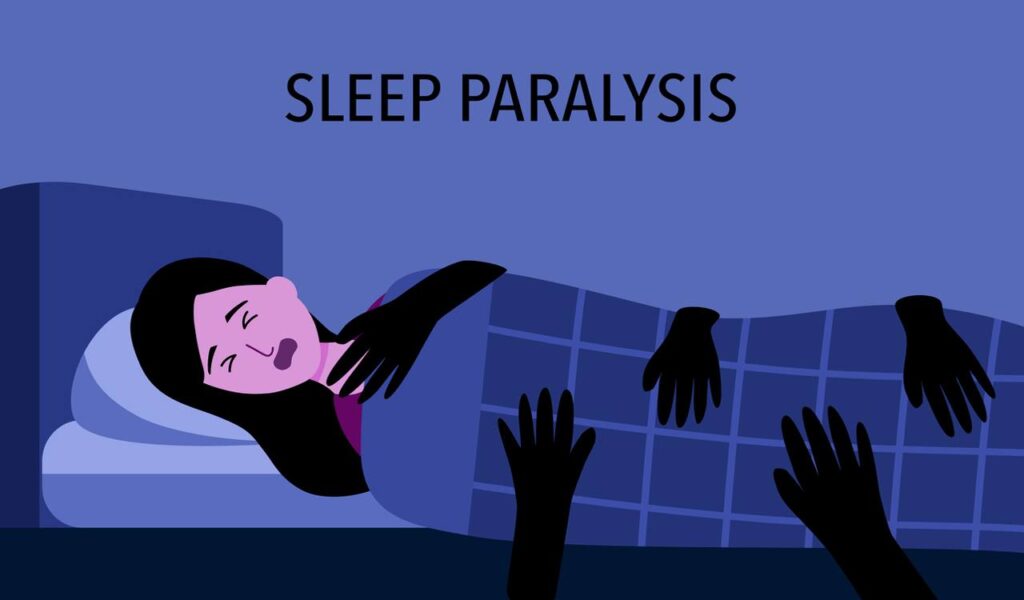
Talking about sleep paralysis reminds me of something most of us experience while we dream. We often find ourselves unable to run away from a foe chasing us. Typically we find ourselves crawling along the ground unable to stand up or run. This is because our legs are essentially ‘paralysed’ during REM sleep because of the REM-off cells and this infiltrates into our dreams.
Night terror is a phenomenon experienced by children, up to the age of 10, and in some people in the thirties. It is not associated with REM sleep, but in deep NREM sleep in the early stages of sleep (during the first third of the night). I have treated 2 people with night terror, which is often driven/activated by high body temperatures. Remove all coverings and wet the patients forehead with a damp cloth. Talk to them calmly, and do not wake them up. They usually see a monster on top of them and their hearts are racing. They may complain they are freezing but keep wetting their foreheads and calming them. They will often suggest everything id going too fast. Let them go back to sleep. People experiencing night terror may even open their eyes and sit up in bed but they are in deep sleep.
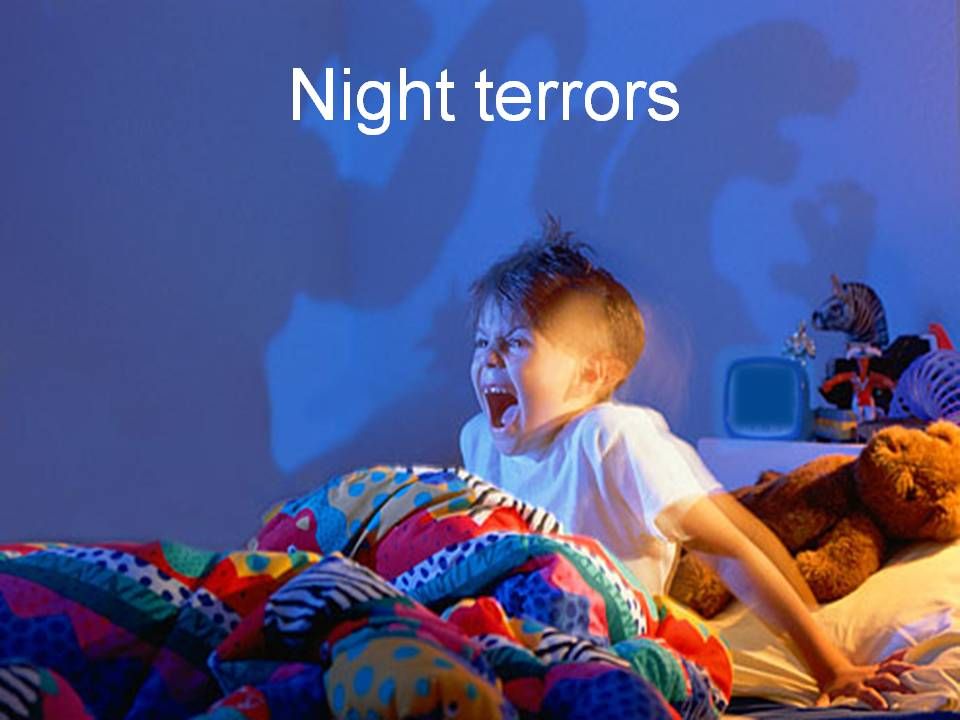
I will discuss the function of dream sleep from a biological point of view in my next blog.
My theory is that dream sleep sets us up for new learning, without which we cannot learn those new things. In a sense we dream what we may learn the next day, but we do know if these dream generated states will be used or if they will be significance. We are just setting up the brain with possibilities for new things to learn. This is however not predicting what will happen, the future or what will be learnt. [I’ll say more in my next blog. Follow me to find out.] New research supports this idea in mice. They can learn something before they are even exposed to it. In my theory dreaming is the essence of new learning and creativity. If we could only apply this concept to LLM A.I., by letting them dream new scenarios and information.
I want to end this blog with this little classic.
No, I forgot a very important thing about dream sleep. The brain runs on many different neurotransmitters. When we are awake, the aminergic neurotransmitters are active, like norepinephrine when we are learning, while during REM sleep the cholinergic neurotransmitters kick in (with acetylcholine), as well as a suppression of serotonin and norepinephrine. This tells us dream sleep may be different than when we are awake, adding weight to the idea that we reverse-learning during REM sleep. The depletion or suppression of serotonin, which is a strong inhibitory neurotransmitter, also means the brain runs wild in a excited state during dream sleep.
Depletion of serotonin in REM sleep is in many way similar to one taking the drug LSD. LSD fills into serotonin receptors and overrides the system, so it is not functioning at all. It can cause stay put in these receptors for prolonged periods.
